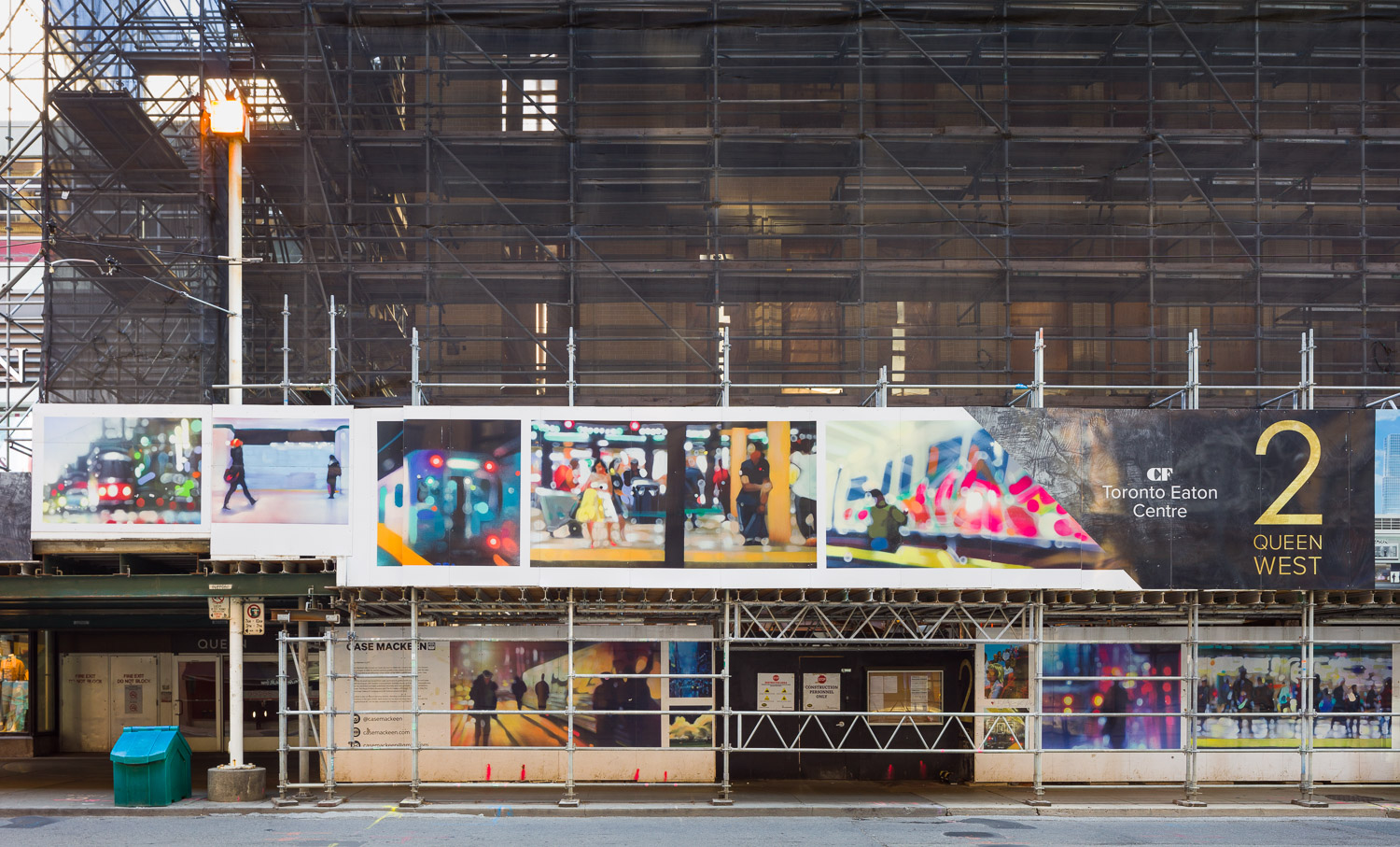In partnership with Cadillac Fairview Toronto Eaton Centre and Downtown Yonge BIA, Case’s hoarding murals are spread across the neighbourhood, depicting traditional street art styled shapes, often called graffiti. However, his works are more than just graffiti, they come along a singular process, and try to reconnect Toronto’s community with a long lasting art practice.
Explore
Unknown

- Spray Paint
- 1977
- 2 Queen Street West, Toronto
About the artwork
About the artist
Ryan MacKeen (also known as Case), had ambitions far beyond his small town of Belleville in Ontario. It was his introduction to street art and graffiti that these ambitions manifested. In 1992, he started painting graffiti in the streets and on trains under the alias ‘Case’ in Ottawa before moving to Toronto. Regarded as an influential urban artist amongst his peers, Case excelled during the 1990’s graffiti boom in Toronto. Not only did he contribute to the legitimacy of Toronto Graffiti, he also helped legalize and secure many of today’s graffiti landmarks in Parkdale and Queen Street West.
Case’s work and creativity never ceased and he began producing works on canvas and moved into galleries. His style which he calls “post-graffiti impressionism”, a nod to modern impressionism combined with graffiti, where the paint is allowed to speak on the surface itself.
Mackeen has been exhibited and published nationally and internationally with selected exhibitions at: The Royal Ontario Museum, The Art Gallery of Ontario, Cutlog New York, The Carmichael Gallery of Contemporary Art Hollywood and Art Basel.
Ryan MacKeen is also an award-winning director, directing numerous music videos and animations since the early 2000s, best known for his Juno-winning video for The Arcade Fire’s Neighborhood #3. He has also worked with other influential artists such as Eminem, Ice T and Neil Diamond.
Fun facts
- As well as being a street artist, Case developed a unique technique where graffiti writing has been a defining part of his life to fully experience it. While drawing upon old photos, the artist created his current style of what he has been calling Post-Graffiti Impressionism. Similar to painting a train, he executes his work freehanded with spray paint as quickly as possible.
Engagement questions
- Should we better protect graffiti art and give self-expression spaces for artists?
- Do you know what graffiti actually means?
